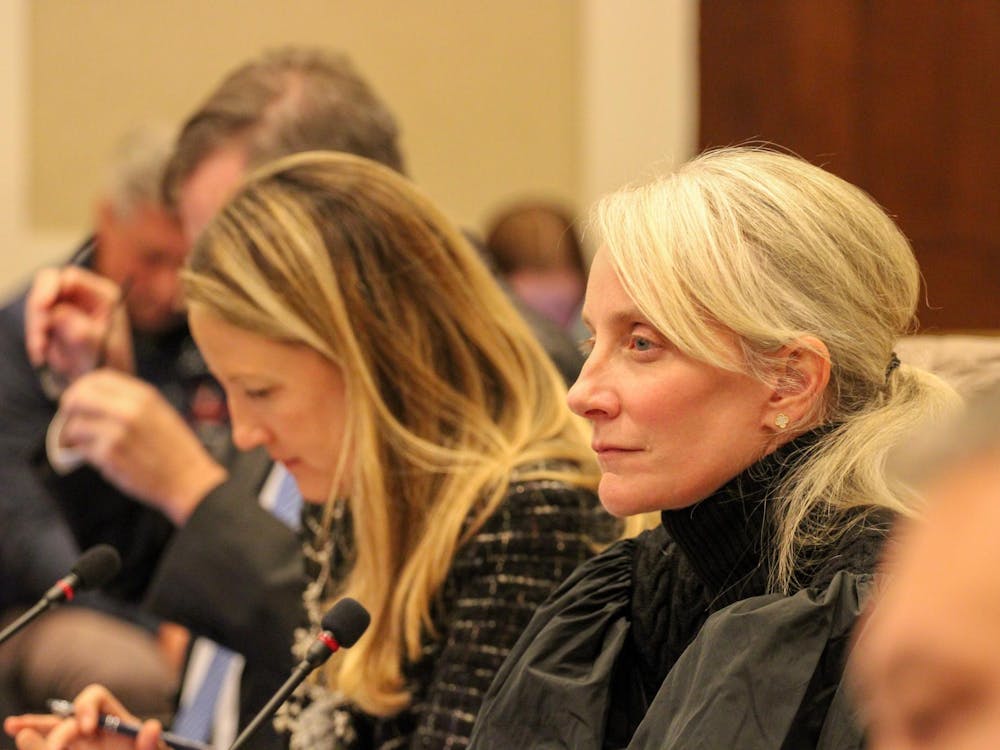(This is the first in a two-part daily series on the use of DNA evidence in criminal investigations.)
The emergence of DNA evidence as an integral component in rape cases has revolutionized the justice system.
DNA evidence has changed both the way police conduct investigations and how prosecutors and defense attorneys interpret and use evidence in a trial against an alleged offender, police say.
University Police Detective Kim Pugh describes DNA technology as "the greatest advancement in law enforcement since fingerprinting."
Detectives can use DNA to genetically match evidence collected at crime scenes with suspects, changing the face of law enforcement.
The increased use of DNA profiling has changed the way regular street cops, who usually arrive first on the scene, handle evidence, because every item a suspect may have come in contact with has become even more important.
"The initial officers value more now the importance of collecting evidence. Cigarettes, beer cans, clothing ... officers look more for those types of evidence than in years past," University Police Chief Michael Sheffield said. "On a day-to-day basis they are aware that [those] may be the critical piece of evidence you are looking for in a case."
Charlottesville Police Chief J.W. "Buddy" Rittenhouse reflected on his lengthy career and said that 35 years ago "there was a lot of solid police work, but we did not have the advantage of physical evidence."
Before the advent of DNA profiling, police had to rely mainly on eyewitnesses, fingerprints and interrogations of suspects in investigating crime.
These factors still have a great deal of investigative importance, but they require having a suspect to make them most effective.
DNA enables police to investigate crimes when there is not a clear suspect, as has often been the case in recent years.
"DNA has revolutionized how we investigate crimes today," Rittenhouse said.
Police are now able to collect evidence from the scene of a crime, analyze it in a lab and process the results through a DNA databank from Richmond. This process allows them to obtain and arrest a suspect without the fallibility of human eyewitnesses or incomplete fingerprints.
Although DNA can identify a suspect almost beyond a reasonable doubt, police still continue the "legwork" of days past. "When we get a hit [in the databank] we don't stop right there ... we question, we check all the ways we would've done before. We have to do the whole process to cover all leads and to clearly identify the suspect," Univeristy Police Capt. Michael Coleman said.
The incorporation of DNA evidence has prompted new investigative training for police officers.
Detective Pugh, who played an integral part in the August arrest of Shannon Leo Malnowski on two counts of rape and forcible sodomy based on DNA evidence, attended the Forensic Academy, which emphasized the importance of the collection, preservation and delivery of forensic evidence.
Pugh said the Academy taught her "there is always going to be evidence. You just have to find it."
"There are possibilities now that there weren't a long time ago ... with DNA, evidence can come from many sources," she added.
The identification technology enabled by DNA evidence has had a great impact on cases that would have been considered unsolvable just 20 years ago. DNA has allowed police to apprehend suspects that were not identifiable in any other way besides their DNA profiles.
"In the last 12 months over a dozen suspects have been identified by DNA alone," Charlottesville Police Lt. Chip Harding said.
Harding, a founding member of Citizens for DNA, an activist group that lobbied the General Assembly to have former Gov. George Allen allocate $9.5 million to the DNA databank, said "a huge amount of violent crimes are now prosecuted that in the '70s or early '80s would've had no resolution."
He pointed out the need to raise awareness of the importance of DNA technology because of its positive qualities.
"The general public thinks that it's being used nationally and it's not," he said. "I deeply believe that if DNA technology was used [as extensively] nationally as it is here in Virginia, a lot of your serial killers [and rapists] would be caught."
The use of DNA evidence has had a profound effect upon the prosecutors and defense attorneys in the legal system as well. Because DNA identification is more reliable than eyewitness identification, it is very important for the prosecutor to show the evidence was not in any way tampered with.
Commonwealth Attorney Dave Chapman said DNA evidence is "compelling and it is very hard for jurors to ignore it so long as the evidence is collected and handled appropriately."
Asst. Commonwealth Attorney Ronald M. Huber described presenting DNA evidence in court as "an educational process for the jury."
Juries must be shown how the evidence was collected, preserved and delivered to the lab so there is no questioning of the validity of the evidence being presented.
"It has called upon us as prosecutors of how to deal with the scientific endeavor of DNA testing ... principally in the last 10 years," Chapman said.
Defense attorney Lloyd J. Snook III said DNA evidence has changed the way a defendant will approach a case in court, and therefore the attorney must change accordingly.
"I go by what my client says ... what usually happens is [DNA] induces people to plead guilty," Snook said.
In most rape cases in which a victim sustains injuries, the only line of defense is to try to call the evidence into question.
The presentation "of the preservation and collection of evidence in court is so important because a defense attorney will speculate every piece of evidence," Rittenhouse said.






